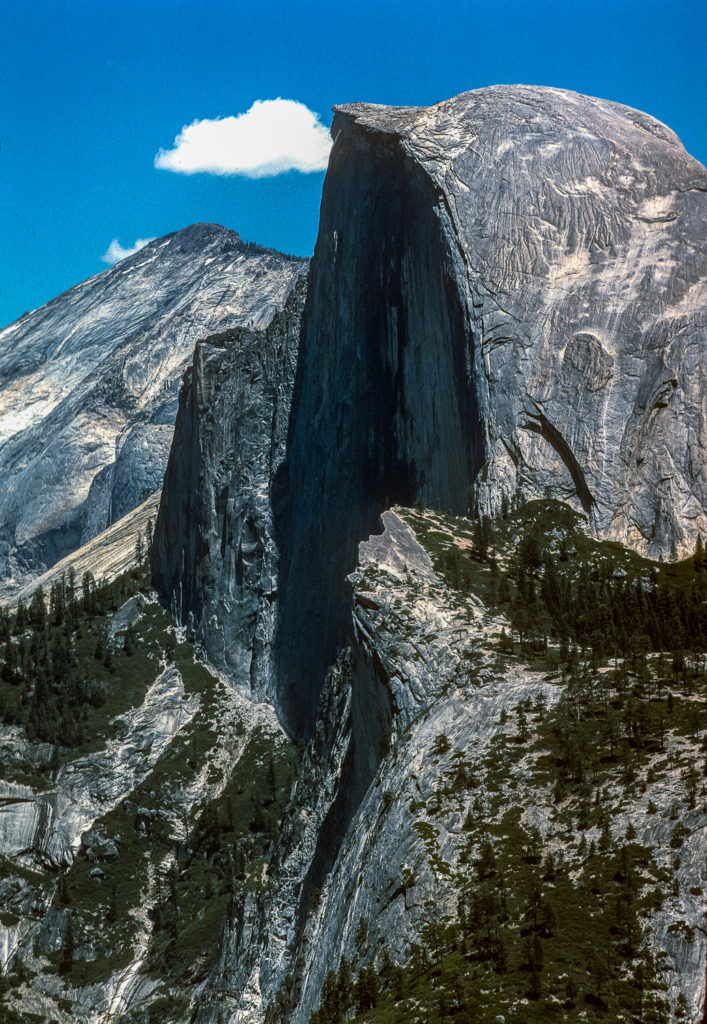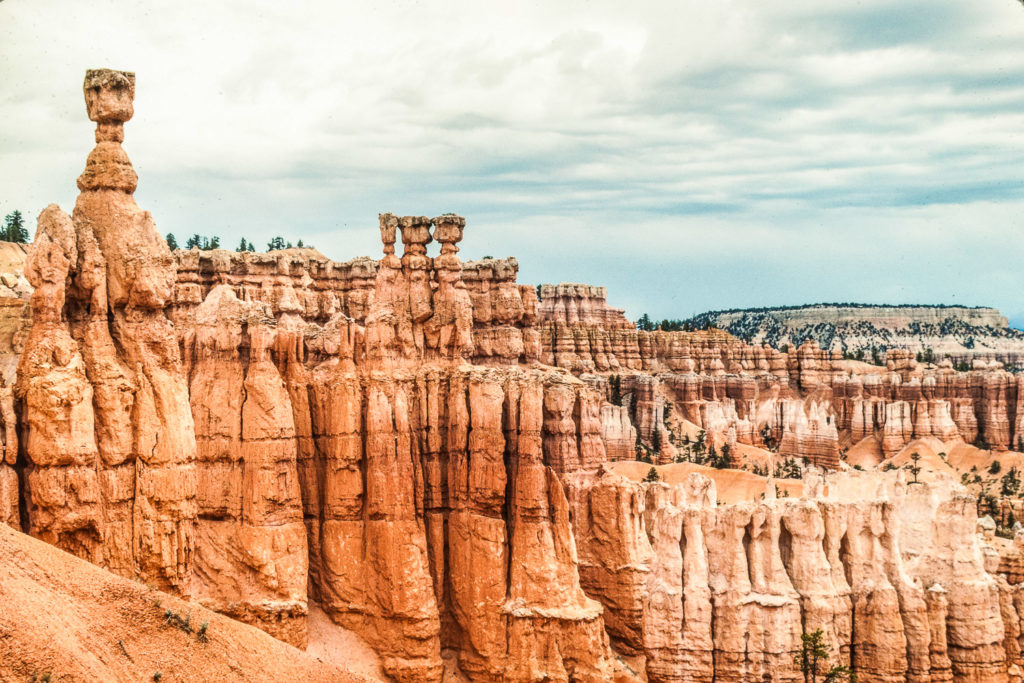
T Minus Four Minutes – 1990
By Clive and Carol-Ann Jackson
Selfishly, I wanted a little something for Dad. It was the spring of 1990 and we had promised to take our son, Simon, to Disney World, Typhoon Lagoon and Epcot Centre in Florida as well as a driving trip through the Everglades.
But I wanted to add a touch of drama to our plans and had just read about an upcoming space shuttle launch at nearby Cape Canaveral. Not just any launch, but the Discovery which was carrying the Hubble telescope into space on an historic mission.
I phoned NASA to see when the launch was scheduled and how we could guarantee getting as close as possible to the launch pad.
It turned out they were raffling tickets for a reserved area maybe half a mile from the launch pad. I entered the draw, and to my amazement won three of the coveted tickets.
So at two in the morning of April 10,1990, we drove from our hotel in Orlando to Cape Canaveral where we were ushered into the specially reserved area for the winners of the lottery – along with families of the many professionals who designed, planned and actually built the Hubble Space Telescope.
Not only was there a remarkable buzz in the air that early morning, but we immediately felt a special relationship with the launch because so many people around us were intimately involved with building the telescope. In fact, we became lifetime friends with one man and his family who helped engineer Hubble in California.
As dawn arrived, the early morning Florida sun reflected off the shuttle on the launch pad right across from us. The tension was palpable. The countdown began. Everyone stopped talking and watched, totally focused on the launch.
And then, at T-Minus 4 minutes, the flight was scrubbed due to a faulty valve in the power system. I am not sure I have ever felt so dispirited. I can only imagine what the crew felt. From sheer ecstasy one moment to a feeling of total disappointment the next.
Feeling dejected, we left our new found friends and crawled back in heavy traffic to our hotel knowing the chances of seeing the shuttle launch now were slim to nil. Time was running out. And it could be weeks before they tried again.
However, we still had our two-week trip to Disney World and the Epcot Centre to enjoy and they were delightful – especially through the eyes of a seven year old child.
We had a fascinating drive through the Everglades, watching crocodiles and alligators in brackish mangrove swamps, before plenty of beach-time at Fort Myers on Florida’s East Coast. And all the time we were monitoring NASA and their plans.
Finally we heard news of the new launch date: April 24 – the very day we were booked on an early morning flight back to Vancouver.
But after a quick negotiation with a very sympathetic airline, the now defunct Northwest Airlines, our tickets were switched to the following day. And amazingly, they were so understanding, they didn’t even charge us a penalty. We had one more shot at experiencing the shuttle launch and perhaps a moment in history.
Going through the same routine as we had done two weeks earlier, we made our early morning drive to the Cape, albeit this time with a knot in our stomachs. Meeting up with our friends, we all waited with bated breath.
The weather was fine and the countdown commenced. But then at the 31 second mark, the count was held, another system failure! This time with the oxygen fuel valve. We could hear, all around us, the collective sighs of disappointment. But unlike the last time, within minutes the count resumed.
”Ten, nine, eight……..two, one… And lift-off of Space Shuttle Discovery with Hubble Telescope. A window on the Universe.” It was beyond thrilling. The sensation of feeling the sound, the thrust, the power, and more than anything else, seeing the colour. Vivid reds and yellows. Along with everyone else we clapped and cheered and wished them God Speed. It was mesmerizing.




The most stunning event I have seen in my life: our lives, we decided. The STS 31 was the 35th mission of the American Space Shuttle program but we knew instinctively we were seeing history being made with the successful launch and the deployment of the Hubble Telescope.
Our new friend, who had spent the bulk of his working life on the Hubble, told our young son that by time he graduated in 2000, what we would know by then would be drastically altered by this telescope. He stayed in touch with us for the rest of his life and kept that little boy dazzled over the years with the mysteries Hubble “decoded”, by sending back detailed images allowing us to gaze deeply into space and time.
Bidding farewell to our launch friends, emotionally exhausted we returned to our hotel, where Simon immediately drew the launch from memory, perfectly capturing the colour and the drama on a tiny telephone scratch pad in the room. We framed it and it hangs, with our photos, prominently in our home to this day.
Hubble was the centrepiece of that holiday. My wife, Carol-Ann, and I had made a conscious decision – after years of adventures around the world – that it was important to us to be at home with Simon as he grew up and give him experiences that he would enjoy.
After our honeymoon around the world we did mange trips to visit friends and family in England and Australia, and even had a day or two in China well before it opened up fully to the West. But we went almost two decades without adventure travel on our agenda – at least overseas adventures.
Instead, we drove tens of thousands of miles over a dozen or so summers visiting many of the great national parks throughout Canada and the U.S. And we twice drove 10,000 miles to Alaska and back in a rented VW camper.
I have always loved taking photographs, and one of the smartest things we ever did was to buy Simon, when he was about seven, a camera. But not just a cheap point and shoot, but a decent Nikon where the pictures would be sharply focused and have good colour.
The first year, Simon followed me and mimicked my every shot. Never again. By the next summer I was following him and learning from his remarkable ability to frame perfect images. Today he is a photographer with an international reputation whose work has appeared in National Geographic and been exhibited at the White Museum in Banff. Check out his website.
Our trips in the wilderness, often camping in tents, sustained us over the years. Sometimes, thanks to overtime which I took as vacation, we were on the road for six weeks at a stretch. We visited, amongst others, the Grand Canyon (walk to the Colorado River at the bottom, if you have time), Arches, Bryce, Canyonlands, Zion, Yosemite, and the stunning Crater Lake, Oregon.



We once visited the giant limestone caves at Carlsbad Caverns in New Mexico, memorable not just for the massive formations, but for the flight of literally tens of thousands of bats who fly out of the caves in the early evening to forage insects.
My personal favourite was Bryce Canyon in Utah, known for spectacularly coloured hoodoos in spire-shaped rock formations. A forest of stone, as Simon said, as we walked along the valley floor looking up at the towering monoliths.



Carol-Ann’s top park, by a long shot, was Mesa Verde in Colorado. One of the best kept secrets in the U.S., known for its well-preserved ancestral Pueblo cliff dwellings. Their homes were carved in the side of canyons between the 6th and the 12th centuries. At the time we visited, we hiked in and at the moment we turned a corner, we were met with a sight that, as my wife said, took our breath away. Built beneath overhanging cliffs, lit by the extraordinary light that is in that part of the world, were a honeycomb of well designed and stunning ancient structures. The ancient peoples were called the Anasazi and we were able to climb up ladders, and crawl along tiny ledges, squeezing through minuscule openings, to visit the shelters in the rock. I understand both the name, Anasazi, and the access to the shelters has changed over the years.
But our family favourite, which really became our second home for much of the 1990s was Yellowstone National Park in Wyoming. There we made life-long friends and spent weeks camping in the park’s Northern Loop watching bears, black and grizzly, and wolves which had just been re-introduced into the Wyoming wilderness from Canada. We were up at five most mornings to catch those early morning hours, before it got blisteringly hot, when there was a plethora of wildlife. It was a remarkable time.


Our back to back trips up the Alaska Highway were fantastic. The highway today is much better than when I first travelled along it in 1977. We drove into Mount McKinley on both occasions and had the wonderful luck of seeing the entire mountain without a cloud on the horizon. Those clear days are rare, as it is often covered in cloud and mist.


We even drove up the Dempster Highway to the Arctic Circle. We were warned that the gravel road was not only very remote but also unforgiving. And even though we took a spare tire, we were surprised and challenged when we lost one on an isolated stretch of highway. Struggling to change it without killing each other, we were grateful to a German tourist, familiar with the VW van, who eventually stopped and helped us!
Dawson City in the Yukon, inseparably linked to the Klondike Gold Rush, was a must-see along with Kluane National Park where we saw the best display of the dancing Northern Lights we have ever witnessed. The park, made famous by the iconic poem, the shooting of Dan McGrew, by Robert Service, was one of our favourites.
One of our last family trips was a cross-Canada tour. We flew to Toronto and rented a car to drive to the Maritimes. We drove the spectacular Cabot Trail on Cape Breton Island, visited Peggy’s Cove, Lunenberg and stopped for a day at the fortress in Louisbourg…another surprise that took our breath away as we rounded the corner leading into the ruins, founded by the French in 1713.


Quebec City and Prince Edward Island were among the many highlights of our trip, along with a wonderful visit to the Gaspe region of Quebec. In those days, back in Toronto, we were able to pick up a vehicle that needed to be driven to a new owner on the West Coast. We had ten days to make the trip across the Prairies and then the Rockies – and all we had to pay for was the gas. It was another opportunity to visit more of our Canadian National Parks, including Riding Mountain in Manitoba, Grasslands in Saskatchewan and of course, our first national park, Banff.

And to bookend this piece, let me end on the space shuttle. My wife and I were lying in bed one morning in April 1991 when we heard on the radio that the returning Space Shuttle Columbia was being diverted due to inclement weather in Florida, to land at Edwards Air Force Base in California.
We had 24 hours to make it, and we did. It was a fast drive. Not as spectacular as the Discovery launch the previous year, but still extraordinary to see a shuttle glide onto the runway, with massive parachutes slowing it down. And then to watch it fly out again, piggyback style, on top of a Boeing 747. It brought our space odyssey to a perfect close.



